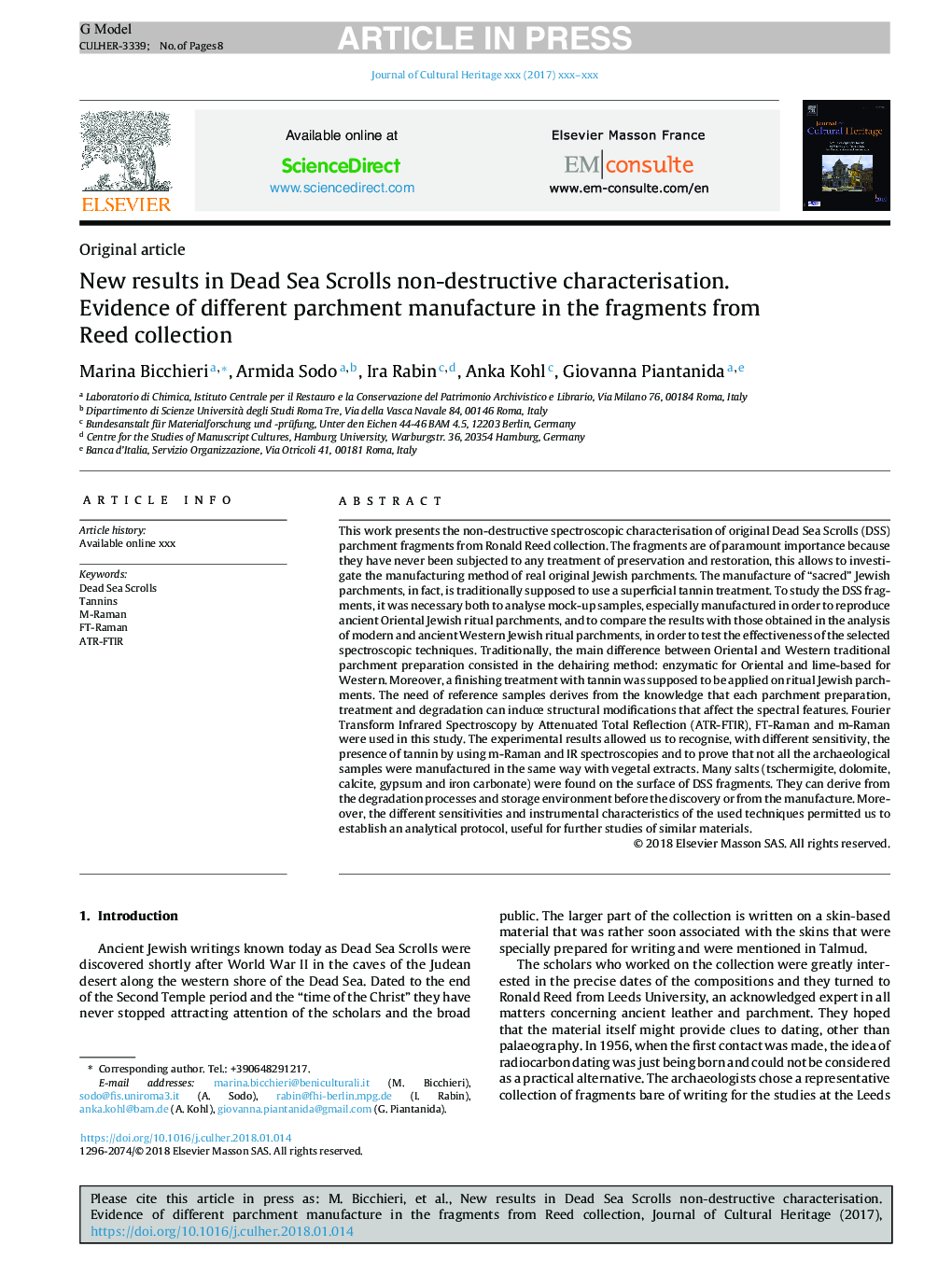| کد مقاله | کد نشریه | سال انتشار | مقاله انگلیسی | نسخه تمام متن |
|---|---|---|---|---|
| 11005212 | 1483943 | 2018 | 8 صفحه PDF | دانلود رایگان |
عنوان انگلیسی مقاله ISI
New results in Dead Sea Scrolls non-destructive characterisation. Evidence of different parchment manufacture in the fragments from Reed collection
ترجمه فارسی عنوان
نتایج جدید در مشخصه غیر مخرب در دریاهای دریای مرده است. شواهد تولید پرممت های مختلف در قطعات از مجموعه رید
دانلود مقاله + سفارش ترجمه
دانلود مقاله ISI انگلیسی
رایگان برای ایرانیان
کلمات کلیدی
موضوعات مرتبط
مهندسی و علوم پایه
شیمی
شیمی تئوریک و عملی
چکیده انگلیسی
This work presents the non-destructive spectroscopic characterisation of original Dead Sea Scrolls (DSS) parchment fragments from Ronald Reed collection. The fragments are of paramount importance because they have never been subjected to any treatment of preservation and restoration, this allows to investigate the manufacturing method of real original Jewish parchments. The manufacture of “sacred” Jewish parchments, in fact, is traditionally supposed to use a superficial tannin treatment. To study the DSS fragments, it was necessary both to analyse mock-up samples, especially manufactured in order to reproduce ancient Oriental Jewish ritual parchments, and to compare the results with those obtained in the analysis of modern and ancient Western Jewish ritual parchments, in order to test the effectiveness of the selected spectroscopic techniques. Traditionally, the main difference between Oriental and Western traditional parchment preparation consisted in the dehairing method: enzymatic for Oriental and lime-based for Western. Moreover, a finishing treatment with tannin was supposed to be applied on ritual Jewish parchments. The need of reference samples derives from the knowledge that each parchment preparation, treatment and degradation can induce structural modifications that affect the spectral features. Fourier Transform Infrared Spectroscopy by Attenuated Total Reflection (ATR-FTIR), FT-Raman and m-Raman were used in this study. The experimental results allowed us to recognise, with different sensitivity, the presence of tannin by using m-Raman and IR spectroscopies and to prove that not all the archaeological samples were manufactured in the same way with vegetal extracts. Many salts (tschermigite, dolomite, calcite, gypsum and iron carbonate) were found on the surface of DSS fragments. They can derive from the degradation processes and storage environment before the discovery or from the manufacture. Moreover, the different sensitivities and instrumental characteristics of the used techniques permitted us to establish an analytical protocol, useful for further studies of similar materials.
ناشر
Database: Elsevier - ScienceDirect (ساینس دایرکت)
Journal: Journal of Cultural Heritage - Volume 32, JulyâAugust 2018, Pages 22-29
Journal: Journal of Cultural Heritage - Volume 32, JulyâAugust 2018, Pages 22-29
نویسندگان
Marina Bicchieri, Armida Sodo, Ira Rabin, Anka Kohl, Giovanna Piantanida,
